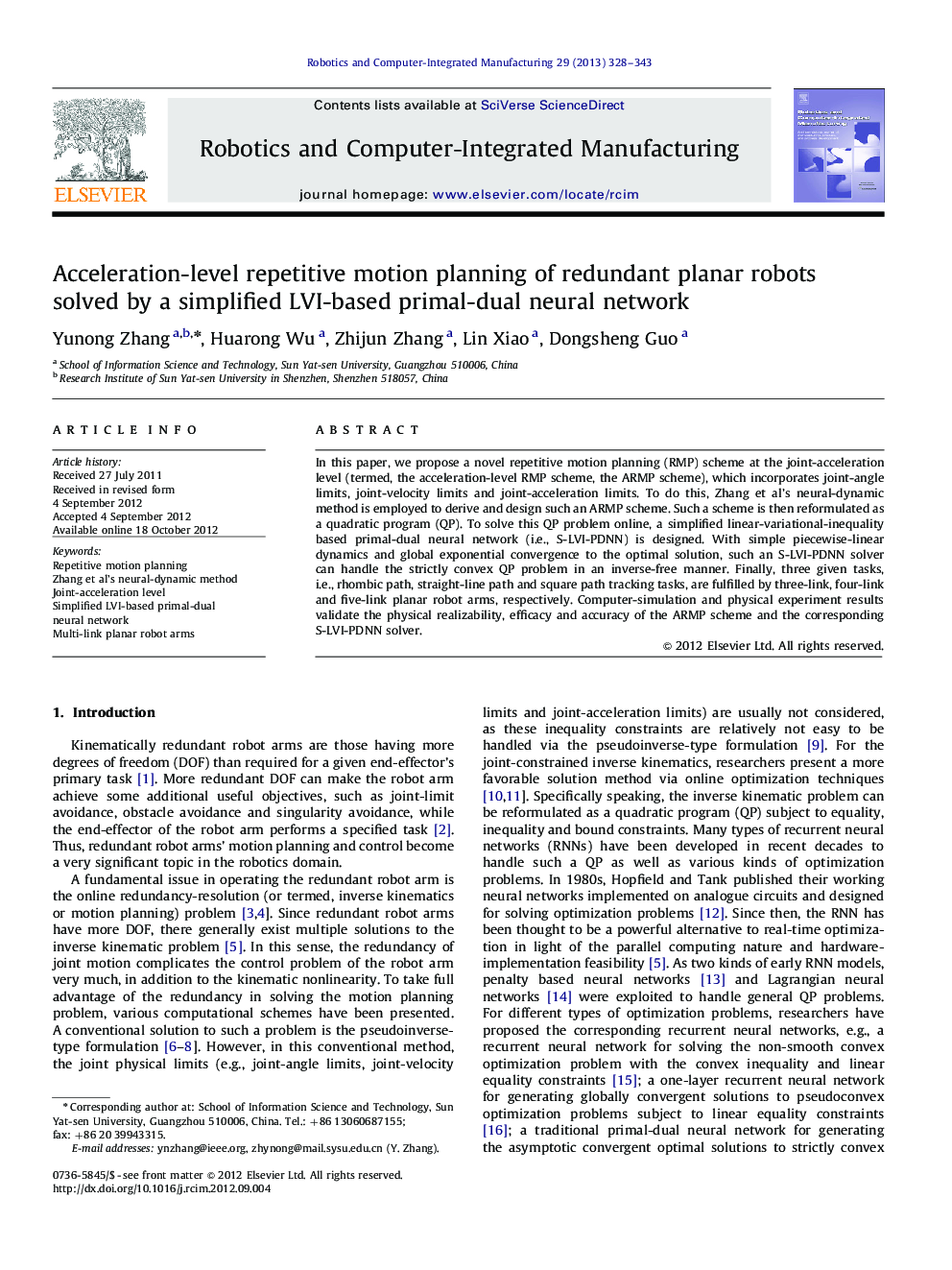| Article ID | Journal | Published Year | Pages | File Type |
|---|---|---|---|---|
| 413655 | Robotics and Computer-Integrated Manufacturing | 2013 | 16 Pages |
In this paper, we propose a novel repetitive motion planning (RMP) scheme at the joint-acceleration level (termed, the acceleration-level RMP scheme, the ARMP scheme), which incorporates joint-angle limits, joint-velocity limits and joint-acceleration limits. To do this, Zhang et al's neural-dynamic method is employed to derive and design such an ARMP scheme. Such a scheme is then reformulated as a quadratic program (QP). To solve this QP problem online, a simplified linear-variational-inequality based primal-dual neural network (i.e., S-LVI-PDNN) is designed. With simple piecewise-linear dynamics and global exponential convergence to the optimal solution, such an S-LVI-PDNN solver can handle the strictly convex QP problem in an inverse-free manner. Finally, three given tasks, i.e., rhombic path, straight-line path and square path tracking tasks, are fulfilled by three-link, four-link and five-link planar robot arms, respectively. Computer-simulation and physical experiment results validate the physical realizability, efficacy and accuracy of the ARMP scheme and the corresponding S-LVI-PDNN solver.
► Zhang et al.'s neural network is applied to the research of redundant robots. ► A novel acceleration-level repetitive motion planning scheme is proposed. ► The applicability of gradient-based neural network is proved mathematically. ► Simulations of path-tracking demonstrate the efficacy of the proposed scheme.
